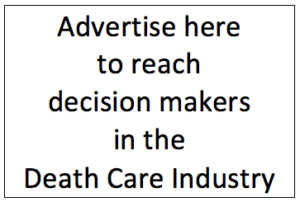What about your debt? . . . .and other strategic year-end plans

I’ve told you before that I sometimes get ideas for Funeral Director Daily articles from the strangest of sources. Today’s thought process in thinking about year-end planning came to my mind on Wednesday afternoon when I was on the treadmill — it was 41 degrees, cold and cloudy in Minnesota — so I was inside listening to an afternoon business talk show on television while I got my daily regiment in.
The talking heads were talking about the United States’ national debt that now sits at about $38.15 trillion. In my opinion, it is so large that it just blows my mind looking at all of the zero’s when I write it out. Anyway, one of the commentators mentioned that the last time the United States had zero debt as a nation was when President Andrew Jackson paid it off on January 1, 1835. Just for the record, part of how he did it was cancelling infrastructure spending and selling off lands in the western United States. . . . . The results were not great right away for the U.S. as the federal real estate sales caused a “bubble” in real estate values and other issues led to the “Panic of 1837”. Here’s a story from History.com on the subject.
This story is not about debt, but the idea of debt and the time around mid-November made me think of end-of-the-year business planning. Have you looked at your business’ situation and understand how you want to spend the cash-flow that has came in during the year?
I was pretty good about planning and pretty good at holding off major expenses unless I had budgeted for them. So, at the end of the year I generally had almost all of the cash-flow from the projected profit for the year in a bank account and it was time to decide what I would do with it.

Tom Anderson
Funeral Director Daily
It was at this time of the year that I got serious about what I would do with that money. Depending on the financial performance for the year my first thought was always about employee bonuses which included retirement plans that included shareholders. . . . and then it was about sharing some of what we had made with non-profit entities in our community through some tax-deductible contributions. (By the way — we always allocated 1% of annual gross revenues for what we termed “Christian Giving”. Our team members helped us decide to which organizations we should send it to each year.)
Next, we looked at Section 179 depreciable items to see if there was anything we could take advantage of before the end of the year and expense the item completely during that calendar year.
Finally, if we had debt — and we carried very little — we might look at paying it down, especially if interest rates were on the high side. And we would look at putting some of the cash-flow into our funeral home savings account to be used for future projects or to be simply divided up among shareholders when we decided to leave the business.
My goal here is not to tell you what to do because every business is different and there are thousands of ways to allocate a business’s cash-flow, but simply to get you to think about what might be good options now so that you have time to implement those options between now and December 31.
To that end, I came upon two short articles from the business consultants and tax specialists at CLA that might be of interest to you:
- Year-end planning to strengthen your business operations
- Tax Bill signed into law: What it means for you and your tax strategy.
More news from the world of Death Care:
- A greener way to go? More people are rethinking what happens to their body after death. Podcast. Minnesota Public Radio – MPR (MN)
- What is a Catholic Cemetery? National Catholic Register
- Paris residents can enter lottery to share cemetery space with Jim Morrison and Oscar Wilde. CNN Travel
- Monthly tours starting at Santa Barbara Cemetery. Edhat.com (CA)
- Docs: Anderson funeral director overcharged families, spent $47k on massages, country club fees, lawn care. Fox 59 News – Indianapolis (IN)
Enter your e-mail below to join the 3,201 others who receive Funeral Director Daily articles daily
“A servant’s attitude guided by Christ leads to a significant life”





















